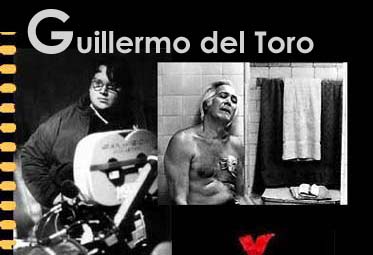





In stark contrast to the poorly researched and superficial New York Times article is one written by Xan Brooks in The Guardian. Grasping the intricate cultural, ideological, and business trends in international cinema, Brooks eruditely describes Mexican, Argentine, and Brazilian filmmaking. "…where the Latin-American films of old were often filed as crude local folklore, the new wave of films is buttressed by gleaming production values and shrewd marketing campaigns. They also come hotwired into an international framework of distribution as never before," he points out.23
Incidentally, Mexican filmmakers like Alfonso Cuarón24 and Guillermo del Toro have established themselves in Hollywood not with "Latino" films but by making mainstream movies, an encouraging sign that many American producers do not stereotype Mexican filmmakers.25
Alfonso Cuarón's first film was Solo con tu pareja, a smart sex comedy made in Mexico in 1991 which got him noticed in Hollywood (even though the film was not distributed in the U.S. because of its humorous treatment of AIDS). He made the successful A Little Princess (1995) and less successful Great Expectations (1998). His runaway international success with Y tu mamá también26 has catapulted him to direct The Children of Men (2003), described as a science-fiction thriller and perhaps the pinnacle directing assignment: Harry Potter and the Prisoner of Azkaban (2004)27.

Guillermo del Toro made the well-received Cronos (1993) in Mexico, an elegant vampire tale. Then he went to Hollywood to film Mimic (1997). He wrote and directed a ghost tale set during the Spanish Civil War, El espinazo del diablo (2001). Shot in Spain, it was produced by Pedro Almodóvar, and had wide art house distribution in the U.S. In 2002, his big budget Blade 2: Bloodlust was well received by fantasy action fans (most of the youth market) and he was shooting Hellboy in 2002, another action/horror film based on a popular graphic novel.
Another Mexican film that had a good reception internationally was Carlos Carrera's El crimen del padre Amaro (2003). It was Mexico's entry for the Academy Awards and by April 2003 had taken in $5.7 million in the U.S after breaking box-office records in Mexico.
Luis Mandoki is another Mexican filmmaker who is well established in Hollywood. After making four films in Mexico in the 1980s, including Gaby: A True Story (1987), he's directed the following films in Hollywood: White Palace (1990), Born Yesterday (1993), When a Man Loves a Woman (1994), Message in a Bottle (1999), Amazing Grace (2000), Angel Eyes (2001), Trapped (2002), and The Untold Love Story: Marie-Antoinette and Count Fersen (2003).


The "Latino" population of the United States is not culturally and ethnically monolithic. It reflects the complex diversity of the countries whence they originated. The families of many American Hispanics have been in the United States for generations, and have lost the Spanish language or speak it haltingly. Added to this population are the millions of immigrants who stream into the country, legally and illegally, not only from Mexico but also from Central America, the Caribbean, and South America. They reflect all social and economic classes and educational levels and represent all races of the world. And their tastes in movies and entertainment cannot be pigeon-holed into a narrow "Latino" genre determined by a handful of politically minded filmmakers more concerned with their "struggle" than with making good films or understanding the complexity of their audience.
Trying to associate their limited-interest, propagandistic product (in English and mostly negative) with quality Mexican and Latin American films that deal with universal concerns and situations is certain to fail. Such an association is incongruous and illogical.Many things I have discussed in this essay are barely mentioned or gingerly skipped over in the United States, perhaps because people in film production and distribution and the media are reluctant (or simply do not know or care) to point out the fallacies inherent in the "Latino" claims and are afraid to be accused of bigotry.So perhaps Mexican cinema is not that isolated from the major currents of world cinema.28It is some groups in the United States that isolate themselves by being too inward-looking and essentially ignoring the world beyond its borders or their own regions. But quality films, wherever they originate, will always find their audience irrespective of culture, language, ethnicity, or country.
